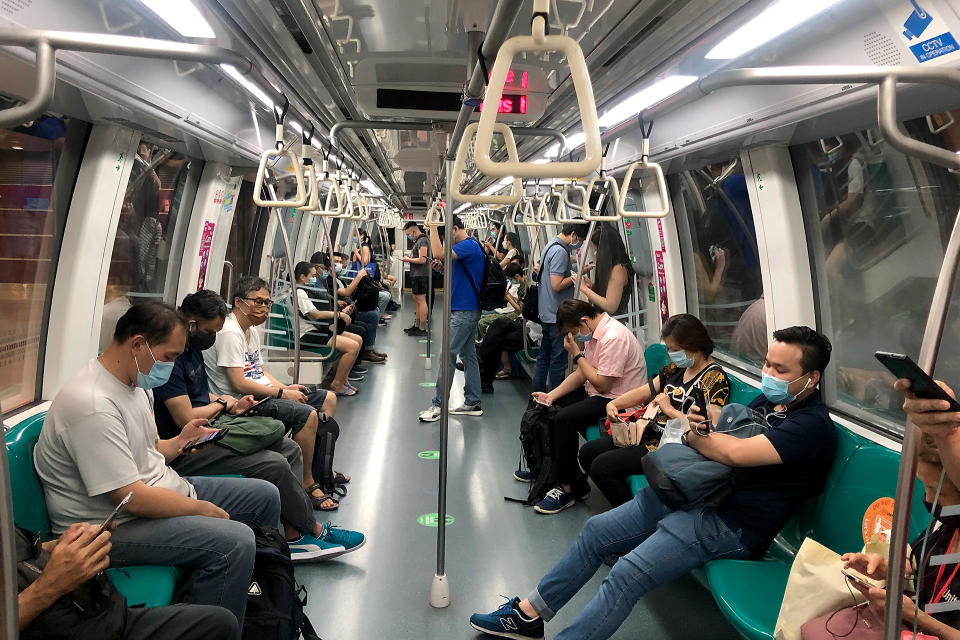COVID-19 has 'decimated' air travel, set back Changi Airport at least 40 years: Ong Ye Kung

SINGAPORE — The coronavirus pandemic has set back Changi Airport by at least four decades, with strict border measures and health concerns leaving it almost “totally incapacitated”, said Transport Minister Ong Ye Kung.
“We used to record over 1,000 aircraft movements a day, now it is about 150. We were the 7th busiest airport in the world in terms of international passenger traffic, but have dropped to 50,” said Ong, who was speaking at the Ministry of Transport’s (MOT) National Day Observance Ceremony on 7 August.
And while transport authorities have explored various ways of bringing back demand, such as resuming the service of transfer and transit passengers, the picture still looks bleak.
Cargo planes are still using Changi, but comprise only about 5 per cent of total flights pre COVID-19. Furthermore, Changi is serving only a “trickle” of transfer and transit passengers, at 400 passenger movements a day, or 150,000 a year, compared to the pre-COVID 19 volume of close to 20 million a year.
The challenge, said Ong, is to restore passenger volume while keeping virus transmission under control, but the former cannot be turned on and off capriciously. “We need to take sensible measures concurrently, proportionate to the risk profile of each country, and make progressive steps as we become more confident.”
For example, Reciprocal Green Lanes for passengers from certain countries or regions, which have kept the virus under control, can be proliferated for business travel and also expanded for general travel. And as serving a two-week quarantine period is a “major deterrent” to travelers, Singapore may have to consider replacing this with a rigorous testing regime.
Ong declared, “Health and economic considerations are not at odds – we will find ways to revive our air hub and keep Singapore safe.”
Expressing optimism about the recovery prospects of the airport, Ong added, “COVID-19 has decimated air travel and incapacitated one of our lungs, but the Singapore heart – our determination, dynamism and enterprise – is still pumping strong. Changi Airport will one day be full again, SIA planes will once again soar.”
SMRT has ‘turned the corner’

Turning to land transport, Ong paid tribute to the SMRT engineers who have “saved the day” again.
“The system used to suffer a breakdown longer than five minutes for every 130,000 train-km travelled. Now, it is clocking over a million train-km between such breakdowns,” said the minister.
And citing figures from SMRT CEO Neo Kian Hong, Ong noted that 70 per cent of maintenance efforts are now devoted to preventive maintenance, and 30 per cent to corrective maintenance. “A few years ago, the ratio was almost flipped the other way around.”
And while Ong pointed to these figures as a “clear sign” that SMRT has turned the corner, he cautioned that this was not a declaration of victory. Maintenance and engineering must remain a top priority.
With new stations and lines opening almost every year over the next decade or so, the MRT network will grow from around 230km today to 360km by then. “The MRT map today is as tight and as comprehensive as many advanced European cities,” said Ong, who added that the government has been spending $2 billion every year to subsidise the running of the public transport system.
Singapore still a transshipment port.
On the maritime front, PSA is anticipating a drop in volumes this year. But PSA will respond “nimbly”, said Ong, to capture new opportunities in areas such as e-commerce, and investing in its competitive advantage.
And the minister stressed, “It is important to recognise these constants in the midst of change. They offer us a centre of gravity as we adapt to a different future.”
For example, in the 1970s, Singapore was the second largest port in the world by cargo volume, after Rotterdam. And while Rotterdam has now dropped to No. 11, Singapore remains at No. 2 as it is a transshipment port: an interchange of the world, where cargo arrives and reconnects to other shipping lines.
“As a transshipment port, Singapore has been the biggest in the world, by volume. That is in turn due to the importance of the Straits of Malacca and Singapore, which has not diminished from the time I was in primary school.”
Stay in the know on-the-go: Join Yahoo Singapore's Telegram channel at http://t.me/YahooSingapore
Related stories:
COVID-19: Singapore confirms 83 new cases, none in the community
COVID-19: Singapore and Japan in talks to finalise limited business travel by September
Plans for 10 Aug start for 2 cross-border travel schemes between Singapore, Malaysia



